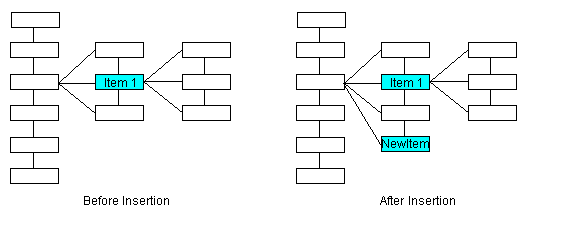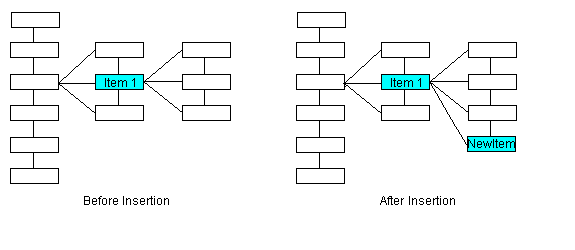| Visual Basic (Declaration) | |
|---|---|
Overloads Public Function InsertElement( _ ByVal neighbor As DicomElement, _ ByVal child As Boolean, _ ByVal tag As DicomTagType, _ ByVal vr As DicomVRType, _ ByVal sequence As Boolean, _ ByVal index As Integer _ ) As DicomElement | |
| Visual Basic (Usage) |  Copy Code Copy Code |
|---|---|
| |
| C# | |
|---|---|
public DicomElement InsertElement( DicomElement neighbor, bool child, DicomTagType tag, DicomVRType vr, bool sequence, int index ) | |
| Managed Extensions for C++ | |
|---|---|
public: DicomElement* InsertElement( DicomElement* neighbor, bool child, DicomTagType tag, DicomVRType vr, bool sequence, int index ) | |
| C++/CLI | |
|---|---|
public: DicomElement^ InsertElement( DicomElement^ neighbor, bool child, DicomTagType tag, DicomVRType vr, bool sequence, int index ) | |
Parameters
- neighbor
- An item in the Data Set. The inserted item will be inserted as a neighbor to this item, or as a child, depending on the value of child.
- child
- true to insert the new item as the last child of neighbor; false to insert the new item as the last sibling of neighbor.
- tag
- Tag of the inserted element. For a list of default values, refer to Data Element Tag Values.
- vr
- Value Representation code that indicates the type of the value stored in the data element.
- sequence
- true if the new item is a sequence; otherwise, false.
- index
-
The index at which the data element should be inserted in a sequence, if the data element is an
DicomTagType.Item. This parameter is valid only if the data element being inserted has a tag of
value DicomTagType.Item; otherwise, the parameter is ignored. The index is zero-based, so if you
want to insert an DicomTagType.Item data element as the first item in the sequence, set this to
0. The value -1 indicates to add the DicomTagType.Item data element to the end of the sequence.
A sequence may consist of one or more items. This parameter lets you insert an DicomTagType.Item data element as any item within the sequence, not just at the end. In addition, it lets you insert multiple DicomTagType.Item data elements within a sequence.
If neighbor points to the parent of a sequence and child is true, the index will pertain to the children of neighbor. If neighbor points to a member of a sequence and child is false, the index pertains to the siblings of neighbor.
For the sake of these illustrations, the order of siblings is top to bottom. Therefore, since added items become the last sibling or the last child, these are drawn at the bottom of the appropriate group of items.
In this illustration, neighbor points to Item 1 and child is false. The new item is added as the last sibling of Item 1.

In this illustration, neighbor points to Item 1 and child is true. The new item is added as the last child of Item 1.

Target Platforms: Microsoft .NET Framework 2.0, Windows 98, Windows NT 4.0, Windows Millennium Edition, Windows 2000, Windows XP Home Edition, Windows XP Professional, Windows Server 2003 family




